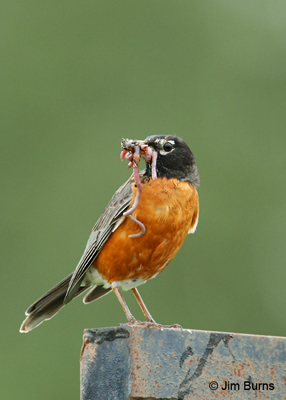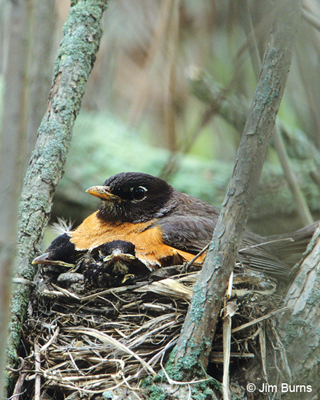
The first takeaway, of course, is the pleasure in nuances of plumage and behavior a recovering listaholic can glean from a newly practiced keener observation of the more common and typically taken for granted birds that populate everyday life. But American Robin is neither common nor to be taken for granted here in the Sonoran Desert at any season. My mind settled on one of the old standard phrases of my Midwestern youth--“harbingers of spring.” The Birds of North America (BNA), in its introduction to American Robin, calls it “America’s favorite songbird . . . an early sign of spring” in northern latitudes.
To even the most casual nature lover who grew up in the East north of the Mason-Dixon line, robin song at dawn said summer as much as the whine of Cicadas or the sound of baseball on the radio on languid, humid evenings. Now here was an American Robin down in the desert Southwest, within a month of the summer solstice, looking for worms when it should have been up in the mountains defending a good breeding territory. Then I was struck by the realization that the vaguely familiar song I had been hearing all week in this area of my commute was, indeed, this American Robin. Birds do not survive on coincidence and American Robins do not breed in the Sonoran Desert. What did it all mean?
I guess those in denial about global warming could place this sighting in the “I told you so” folder, but I suspect it has much more to do with short term weather patterns than with long range climate change. We’ve had a wonderful spring in the Valley, with several decent rains and only one triple digit day to date. Spring migration, such as it is through Arizona, has been later and more protracted than usual. This is simply business as usual based on seasonal aberrations.
I’ve not seen nor heard this robin since. Undoubtedly it is at its summer home in the White Mountains by now. Tomorrow is predicted to be only the Valley’s second triple digit day, but here’s my prediction for the summer, based on my American Robin sighting last week—sunny with below average daily highs.
